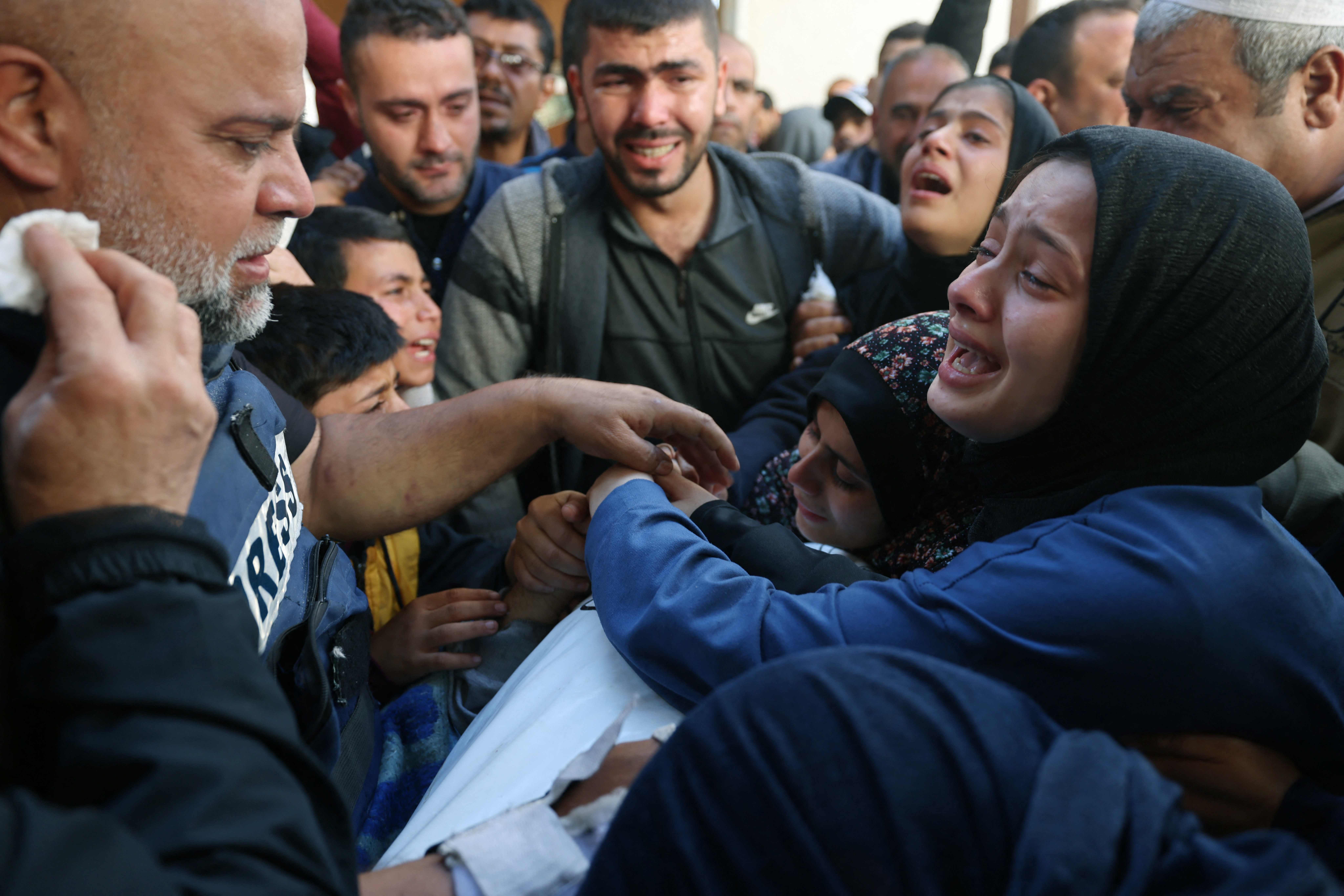LONDON: The son of Al Jazeera journalist Wael Al-Dahdouh on Sunday died in an Israeli strike on Rafah, the Palestinian Mission to the UK reported, just months after the veteran reporter’s wife and two other younger children were also killed.
Hamza Al-Dahdouh, also a journalist, died alongside reporter Mustafa Thuraya in a direct air strike on their car in the southern Gaza Strip city.
“Hamza was not just part of me. He was the whole of me. He was the soul of my soul. These are tears of sadness, of loss. These are tears of humanity,” his father said at his funeral, which circulated on social media.
“I call on the world to look closely at what’s happening in Gaza.”
Condolences poured in for the senior reporter, who has continued his coverage of the conflict despite his tragic losses and being injured himself while carrying out his job.

The widow (R) of Hamza Wael Dahdouh and his father Al Jazeera’s bureau chief in Gaza, Wael Al-Dahdouh (L) mourn over his body on January 7, 2024. (AFP)
In a post on X, Qatar’s Minister of State for International Cooperation Lolwah Al-Khater said: “Oh God, Hamza, what a heartache. How can I console your father? How do I console your brothers? What do I tell them now? We were preparing to see you. We promised you that.”
She went on to condemn Israel and its aerial bombardment of the enclave.
In late October, the wife and two children of the Gaza correspondent were killed in a strike on the Nuseirat refugee camp in the Strip.
“The Al Jazeera Media Network extends its sincere condolences and sympathy to our colleague Wael Al-Dahdouh on the loss of his family in an Israeli airstrike,” the Arabic-language outlet said at the time.
“The indiscriminate assault by the Israeli occupation forces resulted in the tragic loss of his wife, son, and daughter, while the rest of his family is buried under the rubble.”
The family were staying in a temporary home after evacuating Gaza City following Israel’s warning for residents to move south as its forces intensified strikes targeting Hamas.














